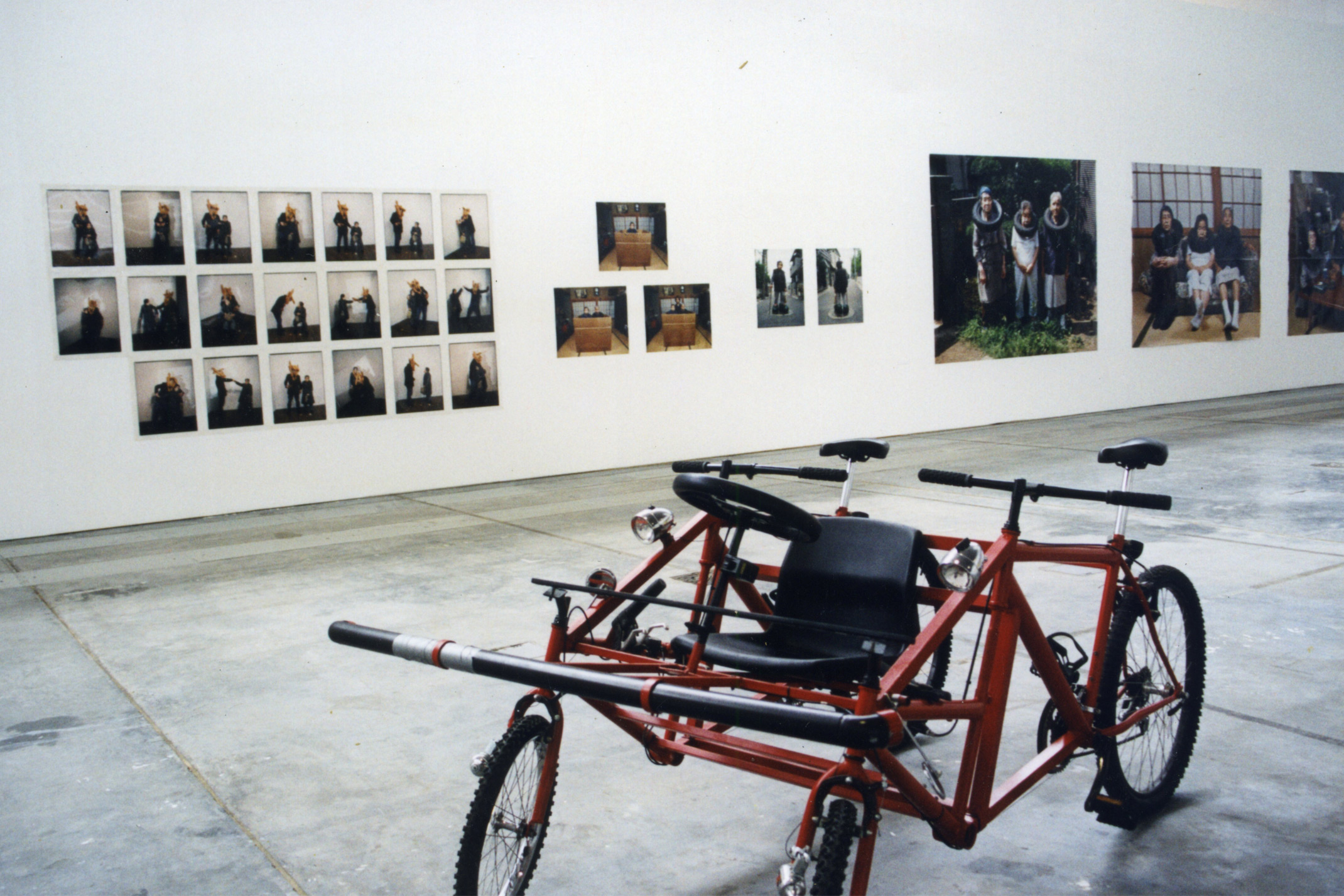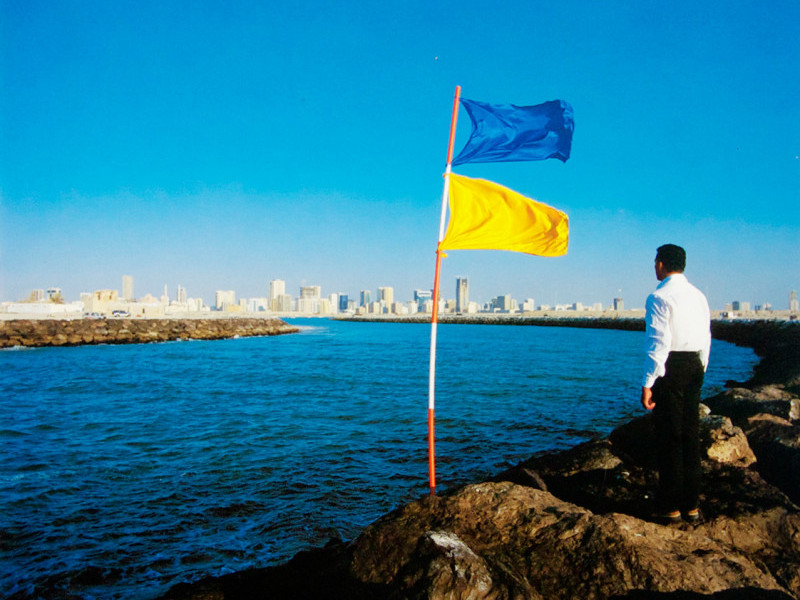
Test drive, 2002
Takayuki Yamamoto
Test drive, 2002
search


Takayuki Yamamoto
Test drive, 2002
On the project, "What is Important," 1998-99, Yamamoto picks up realities told by individuals using the key word, "Important," from newspaper clippings. The installation takes the form of assembling these clippings displayed by using the teaching methods seen in the Japanese educational system. As this changes the context of importance told by individuals and breaks down the internalized hierarchies that determine the whole concept of what is or is not important, "Importance," gets thrown back from where it originated as a narrative category.
In the work using an extension cord, "Untitled," 1998, Yamamoto displays the structure that underlines the work. It relates closely to how stories are constructed and how they are conduits in lived experience.
Currently working in London, Yamamoto continues to explore the terrain of fairy tale realism, to challenge what kind of life is possible in the world where fiction and non-fiction are at both times present and without division, however necessary our thinking in terms of both concrete and abstract. A giant smiling robot with the artist's features is drawn with a cockpit in the head. Here, rather than dealing with themes relating oneself to the outside as he has dealt with in the past, relationships are characterized that survive within a closed environment. Where one individual's delusion enfolds another's truth, Yamamoto believes a phenomenon takes place in the world.
In a recent work, "Smoking Machine," he offers a consumer a device that allows him to smoke in a non-smoking environment. He states, "Today, there is a necessary conflict between concept and fact, an ability to solve problems but as only temporary cures or short cut solutions. Problems in society and systems are not considered from their sources; we live in a world with smokers and non-smokers as moral categories, and which, like the "Smoking Machine" can appear silly, but still are significant."
Yamamoto produced a rough plan for a work which would initiate a commercial product which he calls a "human-engine/car". It is combined from two bicycle parts and one driver's seat. Two people have to pedal the bicycles to move forward but they cannot control the car. Only one driver is in control of steering, gears and brakes. Yamamoto's bicycle is in the tradition of objects that are not privileged as works of art. It risks taking the moral high ground if it stands in for "the everyday" or, on the basis of formal deconstruction, as if producing a "better" object, or again, where the desire is to accomplish a craft via authorising a superior attitude critically to artless subjects and objects, even worse, as an ironic strategy that ends in colonizing its big idea; of improving the world.
Yamamoto says "I wish to risk adding something as I am not a conceptual artist. Now I am working in three different kinds of production which includes, equally, art."
Firstly, in "spoon-bending project", local schools are taught spoon-bending and videos are then made of the psychic effect. The aesthetic, here of psychic sensations, and a perfect bend, is tested against mediated forms of technology redundancy, where common language contexts are conceivable.
"I, as a young Japanese 'westernised' artist, fall into and out of consensus, address the issues of utopia and dissolution in art and aesthetic: to produce a way of dealing with ideology whether new age, nationalist of global."

Sharjah Biennial 6